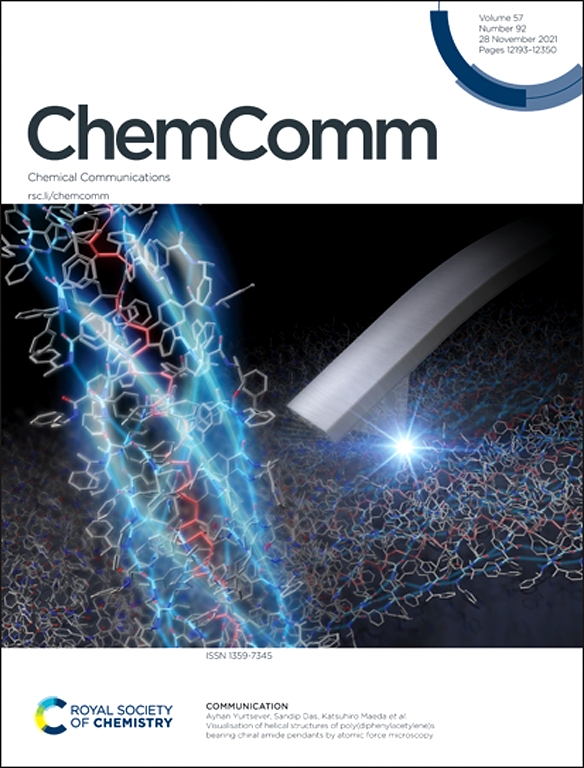基于配体的电化学传感器的制备:芳基重氮直接接枝方法。
IF 4.2
2区 化学
Q2 CHEMISTRY, MULTIDISCIPLINARY
引用次数: 0
摘要
基于电化学适配体(EAB)的传感器代表了一个有前途的平台,用于连续监测各种生物标志物,因为适配体的独特性质,如高亲和力,目标结合可逆性和易于为所需的目标分析物设计。目前,EAB传感器的性能受到分子/电极连接的不稳定性的限制,这种连接主要基于金-硫半共价键,在EAB传感器的工作过程中,这种键在化学和电化学上都不稳定。在这项工作中,我们首次介绍了芳基重氮盐衍生的共价表面化学,通过原位重氮芳基胺化适配体衍生物的自发还原,可以在一个步骤中将适配体直接接枝到金电极上。这种方法通过形成更稳定的界面金碳键,使适配体更牢固地附着在金电极上。该传感器显示出在磷酸盐缓冲盐水(PBS)溶液中连续监测抗生素万古霉素靶点超过48小时的能力。这项工作为可穿戴设备中EAB传感器的开发开辟了新的途径,以克服与硫金化学相关的不稳定性。本文章由计算机程序翻译,如有差异,请以英文原文为准。
Preparation of electrochemical aptamer-based sensors: a direct aryl diazonium grafting approach†
Electrochemical aptamer-based (EAB) sensors represent a promising platform for continuous monitoring of a wide range of biomarkers due to the unique properties of aptamers, such as high affinity, target binding reversibility and ease of designing them for a desired target analyte. Currently, the performance of EAB sensors is limited by the instability of the molecule/electrode link that is mostly based on the gold–sulphur semi-covalent bonds that can be chemically and electrochemically unstable during operation of an EAB sensor. In this work, we introduce, for the first time, an aryl diazonium salt-derived covalent surface chemistry that enables the direct grafting of aptamers on gold electrodes, in a single step, by the spontaneous reduction of an in situ diazotized aryl-aminated aptamer derivative. This method allows for more robust attachment of aptamers on gold electrodes via the formation of a more stable interfacial gold–carbon bond. The fabricated sensor shows a capability to continuously monitor the antibiotic vancomycin target in phosphate-buffered saline (PBS) solution for over 48 hours. This work opens new avenues to overcome the instability related to thiol–gold chemistry for the development of EAB sensors in wearable devices.
求助全文
通过发布文献求助,成功后即可免费获取论文全文。
去求助
来源期刊

Chemical Communications
化学-化学综合
CiteScore
8.60
自引率
4.10%
发文量
2705
审稿时长
1.4 months
期刊介绍:
ChemComm (Chemical Communications) is renowned as the fastest publisher of articles providing information on new avenues of research, drawn from all the world''s major areas of chemical research.
 求助内容:
求助内容: 应助结果提醒方式:
应助结果提醒方式:


